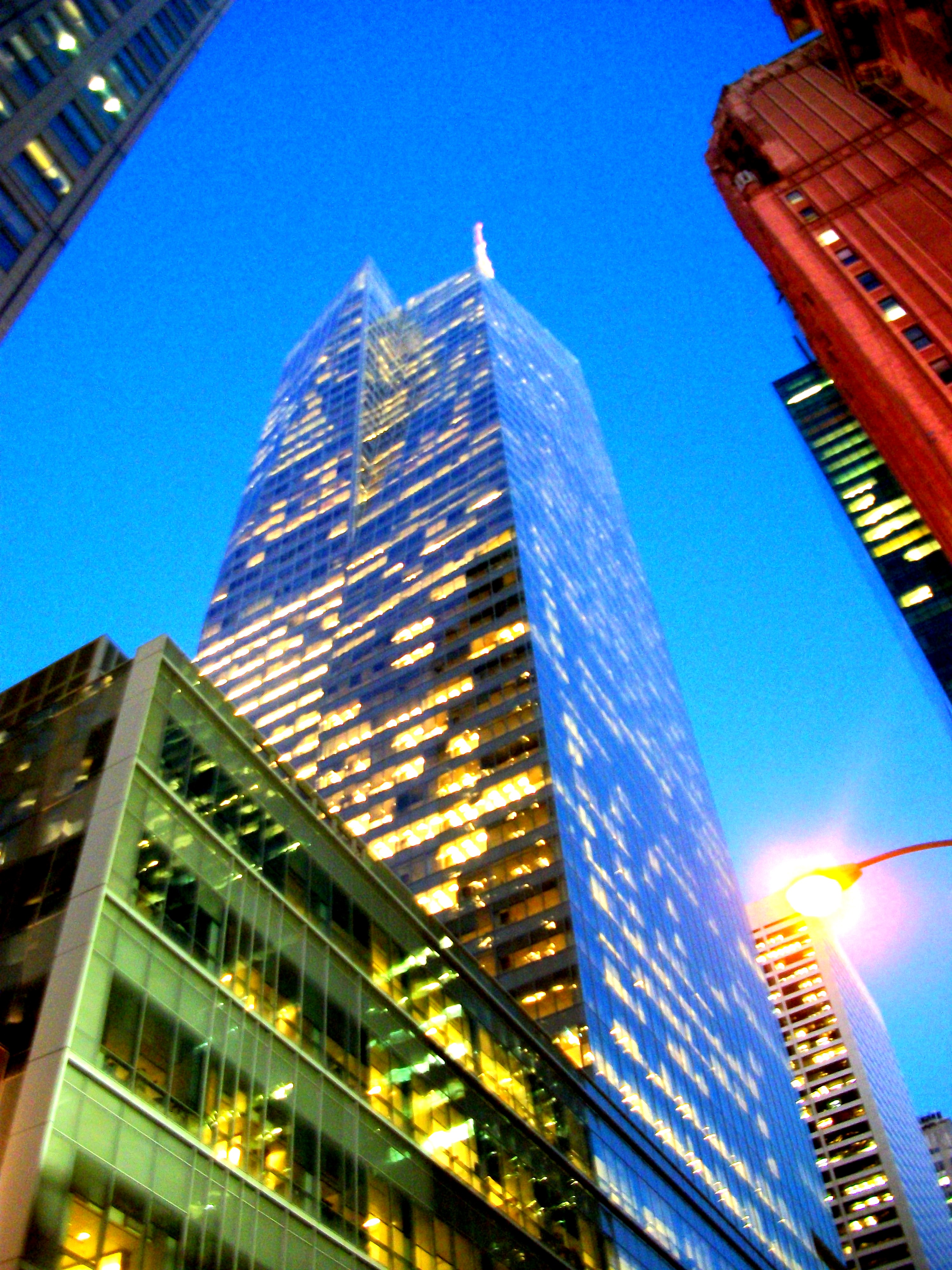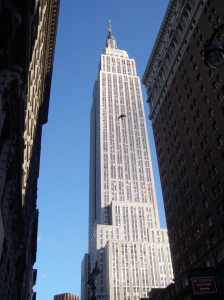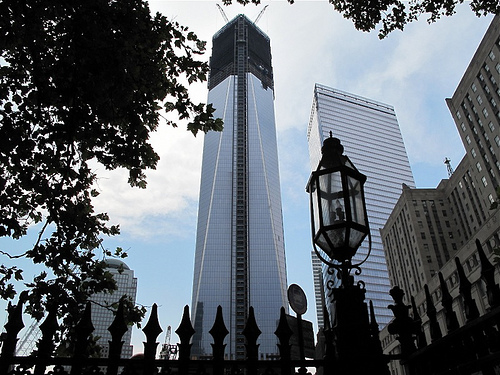Thirteen years after the complaint was filed, on Monday, December 16, 2013, California Superior Court Judge James P. Kleinberg, in People of the State of California v. Atlantic Richfield Co. et al., Santa Clara Superior Court Case No. 1-00-cv-788657, issued a proposed statement of decision (SOD) after a 23-day bench trial premised on an “alleged public nuisance created by lead paint manufactured or sold by five Defendants in ten jurisdictions in California.” SOD p. 1. The sole cause of action remaining in the fourth amended complaint (Complaint) was for a public nuisance stemming from sales of lead paint and pigments that were alleged to have contributed to the contamination of private homes and apartment buildings and risked residents’ health. The remedy sought was abatement of the public nuisance within the prosecuting entities’ jurisdictions. In the SOD, Judge Kleinberg found for the People and against ConAgra Grocery Products LLC (ConAgra), NL Industries Inc. (NL) and Sherwin-Williams Co. (SW) and dismissed the other two defendants.
Ultimately, the SOD ordered “institution of the abatement plan and establishment of the Fund,” as contemplated by the SOD. SOD p. 110. The abatement contemplated is “based solely on the issue of lead paint as produced, promoted, sold, and used for interior use.” SOD p. 10. The 4-year program is to encompass outreach efforts, inspections and, if necessary, abatement of lead paint hazards in about 2.84 million pre-1978 homes determined to pose the greatest likelihood of lead poisoning risk to children; $605 million, or 55% of the $1.1 billion Fund, will be set aside to pay for lead removal in Los Angeles County. SOD p. 108.
The Public Nuisance-Related Allegations
The operative Complaint alleges a single cause of action for “Public Nuisance On Behalf of the People of the State of California.” In support of this cause of action, the Complaint contends that “Defendants are liable in public nuisance in that they created and/or contributed to the creation of and/or assisted in the creation and/or were a substantial contributing factor in the creation of the public nuisance … , including, but not limited to: (a) “Engaging in a massive campaign to promote the use of Lead on the interiors and exteriors of private residences and pub lie and private buildings and for use on furniture and toys;” (b) “Failing to warn the public about the nature of Lead and its attendant health hazards;” (c) “Systematically selling, promoting, and distributing Lead throughout California for exterior and interior use, including use on furniture and toys, despite medical reports indicating that children were dying and suffering from serious injuries from Lead;” (d) “Engaging in a campaign to discredit the medical and scientific literature linking Lead poisoning to Lead;” (e) “Engaging in a concerted campaign to stop regulation of, and restrictions on, the use of Lead;” and (f) “Developing and establishing programs to increase the market for Lead.”
The Complaint further contends that “[a]s a direct and proximate result of Defendants’ conduct, Lead is present in, on and around large numbers of private and public buildings and property throughout the State of California, including residential homes.” It further contends that this Lead “inevitably has deteriorated and/or is deteriorating and/or will deteriorate thereby contaminating these homes, buildings, and property” and, “[a]s a direct and proximate result of Defendants’ conduct, large numbers of people throughout the State of California, and particularly children, have been exposed and/or are being exposed and/or will be exposed to Lead in, on and around the contaminated homes, buildings, and other property throughout the State of California, thereby affecting the health, safety, and welfare of each of those children.”
California’s Public Nuisance Law
California law defines “nuisance” to include “[a]nything which is injurious to health, including, but not limited to, … an obstruction to the free use of property, so as to interfere with the comfortable enjoyment of life or property.” Cal. Civ. Code § 3479. In turn, it defines “public nuisance” to mean a nuisance “which affects at the same time an entire community or neighborhood, or any considerable number of persons, although the extent of the annoyance or damage inflicted upon individuals may be unequal.” Cal. Civ. Code § 3480. The remedies against a public nuisance include abatement. Cal. Civ. Code § 3491. “A civil action may be brought in the name of the people of the State of California to abate a public nuisance … by the district attorney or county counsel of any county in which the nuisance exists, or by the city attorney of any town or city in which the nuisance exists.” Cal. Code Civ. Proc. § 731; Cal. Gov. Code § 26528.
According to the SOD, “the following language of the Appeals Decision is controlling:
“Here, the representative cause of action is a public nuisance action brought on behalf of the People seeking abatement. Santa Clara, SF, and Oakland are not seeking damages for injury to their property or the cost of remediating their property. Liability is not based merely on production of a product or failure to warn. Instead, liability is premised on defendants’ promotion of lead paint for interior use with knowledge of the hazard that such use would create. This conduct is distinct from and far more egregious than simply producing a defective product or failing to warn of a defective product; indeed, it is quite similar to instructing the purchaser to use the product in a hazardous manner, which [City of Modesto Redevelopment Agency v. Superior Court , 119 Cal.App.4th 28 (2004)] found could create nuisance liability.’ (emphasis in original) [County of Santa Clara v. Atlantic Richfield Co., 136 Cal. App. 4th 282, 309 (2006)].
***
Because this type of nuisance action does not seek damages but rather abatement, a plaintiff may obtain relief before the hazard causes any physical injury or physical damage to property. A public nuisance cause of action is not premised on a defect in a product or a failure to warn but on affirmative conduct that assisted in the creation of a hazardous condition. Here, the alleged basis for defendants’ liability for the public nuisance created by lead paint is their affirmative promotion of lead paint for interior use, not their mere manufacture and distribution of lead paint or their failure to warn of its hazards. Id. at 309-310.***‘[L]iability for nuisance does not hinge on whether the defendant owns, possesses or controls the property, nor on whether he is in a position to abate the nuisance; the critical question is whether the defendant created or assisted in the creation of the nuisance.’ (emphasis supplied by Judge Kleinberg) Id. at 306, quoting Modesto at 38[.]”
SOD at 7. “[A]lthough California’s general nuisance statute expressly permits the recovery of damages in a public nuisance action brought by a specially injured party, it does not grant a damage remedy in actions brought on behalf of the People to abate a public nuisance.” People ex rel. Van de Kamp v. American Art Enterprises, Inc., 33 Cal.3d 328, 333 n.11 (1983).
Prohibition On Use of Lead Based Paint
In 1978, the U.S. Consumer Product Safety Commission prohibited the use of lead-based paint in homes. 16 C.F.R. § 1303.4. According to the People: “ConAgra manufactured lead pigments for use in house paints from 1894 until 1958. ConAgra was a member of the [Lead Industries Association (LIA)] from 1928 through 1958 and a Class A member of the [National Paint Varnish and Lacquer Association (NPVLA)] from 1933 through 1962.” SOD p. 21. “NL manufactured lead pigments for use in house paints from 1891 until 1978. NL was a member of the LIA from 1928 until 1978 and a member of the NPVLA from 1933 through 1977.” SOD p. 22. “SW manufactured lead pigments for use in house paints from 1910 to 1947. It manufactured paints with lead pigments from 1880 through the 1970s. SW was a member of the LIA from 1928 through May 1947 and was a Class A member of the NPVLA from 1933 through 1981.” Id.
The Proposed Statement of Decision
Judge Kleinberg was “convinced that the [defendants’] knowledge need not be actual, although proof of actual knowledge has been put in evidence, but that constructive knowledge will suffice.” Id. at 9. He found that the defendants’ constructive knowledge
“took a variety of forms,” citing to numerous sources, including NL Industries internal publications, medical journal articles going back to 1917, information from trade associations going back to the 1930s and other litigation. Id. at 13. He concluded that:
“Despite this actual and constructive knowledge, each Defendant promoted lead pigment and/or lead paint for home use. Defendants’ assertion that they were not aware of the effects of low-level lead exposure until long after they stopped producing and promoting lead paint is of no moment. Each Defendant certainly knew or should reasonably have known that exposure to lead at high levels, including exposure to lead paint, was fatal or at least detrimental to children’s health. That knowledge alone should have caused each Defendant to cease its promotion and sale of lead pigment and/or lead paint for home use. Instead, after becoming aware of the hazards associated with lead paint, they continued to sell it.”
Id. at 10 (internal citations omitted). He further found that “[a]t the same time they were promoting lead paint for home use, each Defendant knew that high level exposure to lead–and, in particular, lead paint–was fatal. Each Defendant also knew that lower level lead exposure harmed children.” Id. at 24. He found “ample authority to hold the Defendants liable.” Id. at 95.
Judge Kleinberg recognized that “[s]eeking the abatement of lead by inspections and rehabilitation of tens of thousands of homes – at a minimum — is a daunting decision.” Id. at 94. However, he was “convinced that although great strides in reducing lead exposure have been made, and the incidence of exposure with correlative blood lead levels has declined to a low level, thousands of children in the jurisdictions are still presently and potentially victimized by this chemical.” Id. He then confirmed that the proposed abatement plan, as amended by the court, “is an appropriate remedy justified by the facts and the law.”
Judge Kleinberg was not persuaded “that since the various lead control programs have been successes no further efforts are appropriate.” Id. at 96. He reasoned that “the existence of other sources of lead exposure has no bearing on whether lead paint constitutes a public nuisance. It does not change the fact that lead paint is the primary source of lead poisoning for children in the Jurisdictions who live in pre-1978 housing.” Id.
The companies likely will file objections to the SOD and, if the objections are not accepted, the defendants may ask for a new trial or mistrial. If that is denied, they may appeal. If the decision stands, the companies will be jointly responsible for paying $1.1 billion into a specifically designated, dedicated, and restricted abatement fund that will be used to abate lead paint contamination in potentially millions of homes in 10 California counties and cities.
Other Sources: U.S. Department of Housing and Urban Development; California Department of Public Health; Los Angeles Times; People of the State of California v. Atlantic Richfield Co. et al. Docket; Environmental Protection Agency





 buildings in the banking industry.
buildings in the banking industry.
 * Chrysler Building (New York) — Height: 320 Meters * Bitexco Financial Tower (Ho Chi Minh City, Vietnam) — Height: 262 Meters * Ryugyong Hotel (Pyongyang, North Korea) — Height: 330 Meters * Transamerica Pyramid (San Francisco) — Height: 260 Meters * Bank of China Tower (Hong Kong) — Height: 367.4 Meters * Kingdom Centre (Riyadh, Saudi Arabia) — Height: 302 Meters * Petronas Twin Towers (Kuala Lumpur, Malaysia) — Height: 452 Meters * Tokyo Mode Gakuen Cocoon Tower (Tokyo) — Height: 204 Meters * Shanghai World Financial Center (Shanghai) — Height: 492 Meters * Hotel & Casino Grand Lisboa (Macau) — Height: 261 Meters * Bahrain World Trade Center (Manama, Bahrain) — Height: 240 Meters * Two International Finance Center (2IFC) (Hong Kong) — Height: 415 Meters * Burj al Arab (Dubai, United Arab Emirates) — Height: 321 Meters * Taipei 101 (Taipei, Taiwan) — Height: 508 Meters * Torre Agbar (Barcelona, Spain) — Height: 142 Meters * Burj Khalifa (Dubai, United Arab Emirates) — Height: 828 Meters * 30 St. Mary Axe (London) — Height: 180 Meters * Turning Torso (Malmo, Sweden) — Height: 190 Meters * One World Trade Center (New York) — Height: 541 Meters
* Chrysler Building (New York) — Height: 320 Meters * Bitexco Financial Tower (Ho Chi Minh City, Vietnam) — Height: 262 Meters * Ryugyong Hotel (Pyongyang, North Korea) — Height: 330 Meters * Transamerica Pyramid (San Francisco) — Height: 260 Meters * Bank of China Tower (Hong Kong) — Height: 367.4 Meters * Kingdom Centre (Riyadh, Saudi Arabia) — Height: 302 Meters * Petronas Twin Towers (Kuala Lumpur, Malaysia) — Height: 452 Meters * Tokyo Mode Gakuen Cocoon Tower (Tokyo) — Height: 204 Meters * Shanghai World Financial Center (Shanghai) — Height: 492 Meters * Hotel & Casino Grand Lisboa (Macau) — Height: 261 Meters * Bahrain World Trade Center (Manama, Bahrain) — Height: 240 Meters * Two International Finance Center (2IFC) (Hong Kong) — Height: 415 Meters * Burj al Arab (Dubai, United Arab Emirates) — Height: 321 Meters * Taipei 101 (Taipei, Taiwan) — Height: 508 Meters * Torre Agbar (Barcelona, Spain) — Height: 142 Meters * Burj Khalifa (Dubai, United Arab Emirates) — Height: 828 Meters * 30 St. Mary Axe (London) — Height: 180 Meters * Turning Torso (Malmo, Sweden) — Height: 190 Meters * One World Trade Center (New York) — Height: 541 Meters